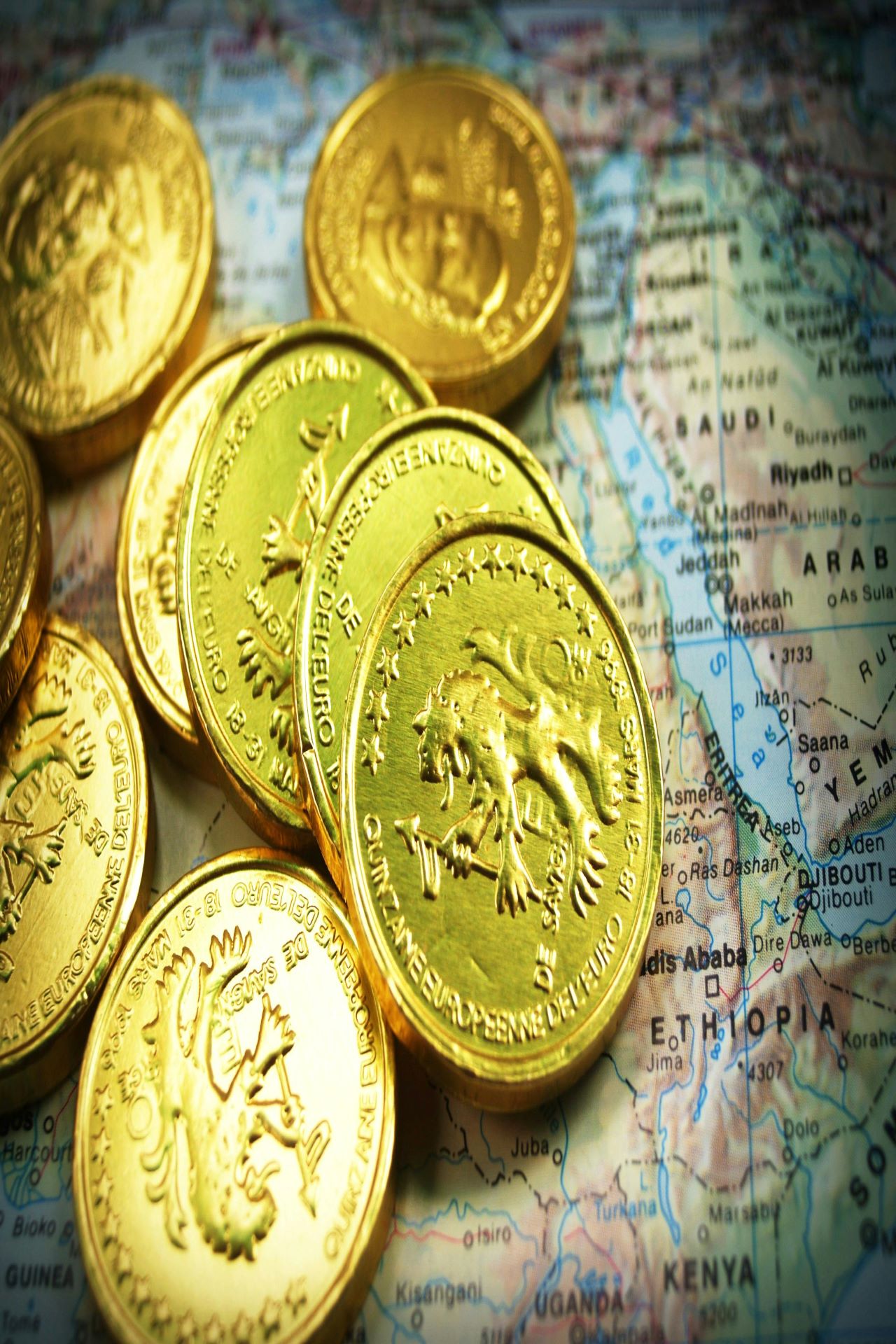Menu

The World Trade Organization (WTO) is an international organization established to
facilitate and regulate global trade. It provides a platform for member nations
to negotiate trade agreements, resolve disputes, and promote free and fair
trade worldwide.
Here is a
detailed explanation of the WTO:
Overview of the WTO
- Founded: January 1, 1995, as the
successor to the General Agreement on Tariffs and Trade (GATT)
established in 1948. - Headquarters: Geneva, Switzerland.
- Membership: 164 member countries as of
2024, covering over 98% of global trade.
Objectives of the WTO
The WTO
aims to:
- Promote Free Trade: By reducing trade barriers
like tariffs and quotas. - Ensure Fair Competition: Establishing rules to
ensure equal opportunities for all trading partners. - Resolve Trade Disputes: Providing a forum for
resolving disputes between member nations. - Support Developing Countries: Assisting them in
integrating into the global trading system. - Improve Predictability and
Transparency: Through
binding commitments and regular trade reviews.
Key
Functions of WTO
- Administering WTO Agreements:
- Agreements cover goods,
services, and intellectual property rights. - Examples: General Agreement
on Trade in Services (GATS), Agreement on Trade-Related Aspects of
Intellectual Property Rights (TRIPS). - Forum for Negotiations:
- Members discuss and
negotiate trade-related issues and agreements, e.g., Doha Development
Round. - Trade Monitoring:
- Reviews national trade
policies to ensure compliance with WTO rules. - Dispute Resolution:
- Uses the Dispute
Settlement Body (DSB) to resolve conflicts between nations regarding
trade rules. - Capacity Building:
- Provides technical
assistance and training to developing and least-developed countries
(LDCs).
Principles of the WTO
- Non-Discrimination:
- Most Favoured Nation (MFN): Treat all trading
partners equally. - National Treatment: Treat foreign goods and
services the same as domestic ones after entry. - Free Trade:
- Encourage lower tariffs and
the elimination of trade barriers. - Predictability:
- Binding commitments make
trade policies stable and transparent. - Competition:
- Prohibit practices like
dumping and unfair subsidies that distort trade. - Development and Inclusivity:
- Provide special provisions
for developing countries to promote equity.
Organizational Structure
- Ministerial Conference: The highest
decision-making body, meeting every two years. - General Council: Handles daily operations
and supervises other councils (e.g., Council for Trade in Goods, Council
for Trade in Services). - Dispute Settlement Body
(DSB):
Resolves disputes among members. - Secretariat: Led by the
Director-General, it provides administrative support.

Achievements
- Reduction of Trade Barriers:
- Facilitated significant
tariff reductions across member countries. - Dispute Resolution:
- Resolved high-profile
disputes, ensuring adherence to trade rules. - Support for Developing
Nations:
Implemented programs - to aid
trade capacity building. - Integration of Global Trade:
- Increased global trade
through comprehensive trade agreements.
Challenges of WTO
- Stalled Negotiations:
- The Doha Development Round
has faced deadlocks over issues like agricultural subsidies and market
access. - Rise of Protectionism:
- Growing trade barriers and
bilateral agreements challenge multilateralism. - Unequal Benefits:
- Critics argue that
developed nations benefit more than developing countries. - Evolving Global Issues:
- The WTO faces challenges
addressing digital trade, environmental concerns, and labour standards. - Dispute Settlement Crisis:
- The Appellate Body has been
paralyzed due to the lack of appointed judges.
Future Prospects
- The WTO is exploring reforms
to: - Revitalize negotiations.
- Strengthen the dispute
settlement mechanism. - Address emerging trade
issues like e-commerce, climate change, and data governance.
With
continued global cooperation, the WTO remains crucial for facilitating
international trade and fostering economic growth.

MAJOR
FUNCTIONS OF WTO
The World
Trade Organization (WTO) performs several key functions to facilitate
global trade, resolve disputes, and ensure fair practices among member
countries. Below are its primary functions:
1. Administering Trade Agreements
- The WTO oversees and ensures
the implementation, management, and administration of multilateral trade
agreements such as: - GATT (General Agreement on
Tariffs and Trade): Trade in goods. - GATS (General Agreement on
Trade in Services): Trade in services. - TRIPS (Trade-Related
Aspects of Intellectual Property Rights): Intellectual property
rights.
2. Forum for Trade Negotiations
- The WTO provides a platform
for member countries to negotiate new trade agreements and update existing
ones. - Example: Doha Development
Round, focusing on issues like agricultural subsidies, market access,
and development concerns.
3. Dispute Resolution
- Through its Dispute
Settlement Mechanism, the WTO resolves trade disputes between member
nations to ensure compliance with trade rules. - Key process:
- Consultation.
- Panel review.
- Appellate review (if
needed). - Implementation of rulings.
4. Trade Monitoring and Policy Review
- The WTO conducts periodic
reviews of members’ trade policies through its Trade Policy Review
Mechanism (TPRM) to ensure transparency and compliance. - Reports help identify areas
needing improvement and foster trust among members.
5. Promoting Free Trade
- Encourages the reduction of
trade barriers (e.g., tariffs, quotas) and other obstacles to smooth
global trade. - Facilitates discussions to
prevent trade protectionism.
6. Supporting Developing and Least-Developed Countries (LDCs)
- Provides technical
assistance, training, and capacity-building programs to help these
countries: - Participate effectively in
global trade. - Implement WTO rules and
agreements. - Negotiate beneficial trade
deals.
7. Handling Trade-Related Issues
- The WTO addresses
contemporary and emerging issues, such as: - Trade and the environment.
- Digital trade and
e-commerce. - Trade-related investment
measures.
8. Ensuring Non-Discrimination
- Ensures adherence to the
principles of: - Most Favoured Nation (MFN): Equal trade treatment for
all members. - National Treatment: Equal treatment for
foreign and domestic goods and services within a country.
9. Strengthening Global Trade Predictability
- Ensures that trade policies
are transparent, predictable, and stable through binding commitments.
These
functions collectively promote a fair, open, and rules-based international
trading system, which is essential for global economic stability and growth.

CHALLENGES OF WTO
The World
Trade Organization (WTO) faces several challenges that hinder its
effectiveness in managing global trade. Below are the key problems and
suggested solutions:
1. Stalled Trade Negotiations
- Problem:
- The Doha Development
Round, launched in 2001 to address issues like agricultural subsidies
and market access, has seen little progress due to disagreements between
developed and developing nations.
- Diverging interests among
members make consensus difficult to achieve.
- Suggested Solutions:
- Break down negotiations
into smaller, sector-specific agreements for easier consensus (e.g.,
fisheries subsidies, digital trade).
- Introduce flexible
approaches like plurilateral agreements, where willing members can move
forward without requiring unanimous consent.
- Enhance trust through
targeted confidence-building measures between developed and developing
countries.
2. Dispute Settlement Paralysis
- Problem:
- The Appellate Body,
a key part of the WTO dispute settlement system, has been non-functional
since 2019 due to the U.S. blocking the appointment of judges, citing
issues like judicial overreach.
- This paralysis undermines
the ability of the WTO to resolve trade disputes effectively.
- Suggested Solutions:
- Reform the dispute
settlement system to address U.S. concerns, such as clarifying the scope
of judicial decisions.
- Develop interim solutions
like the Multi-Party Interim Appeal Arbitration Arrangement (MPIA)
for members willing to use alternative mechanisms.
- Engage in diplomatic
efforts to rebuild trust and reach consensus on Appellate Body reforms.
3. Rise of Protectionism
- Problem:
- Increasing use of tariffs,
non-tariff barriers, and subsidies by major economies undermines WTO
principles.
- Trade wars and unilateral
measures challenge the multilateral trading system.
- Suggested Solutions:
- Strengthen monitoring and
enforcement mechanisms to ensure compliance with WTO rules.
- Foster dialogue to address
specific protectionist measures and their global impact.
- Promote regional trade
agreements as stepping stones toward multilateral cooperation.
4. Inequities in Trade Benefits
- Problem:
- Critics argue that WTO
agreements disproportionately benefit developed countries, leaving
developing and least-developed countries (LDCs) at a disadvantage.
- Limited capacity in LDCs to
implement agreements and participate effectively in trade.
- Suggested Solutions:
- Enhance technical
assistance and capacity-building programs for LDCs.
- Provide greater flexibility
in implementing WTO agreements, such as extended timelines for developing
countries.
- Strengthen Special and
Differential Treatment (SDT) provisions to address inequities.
5. Inadequate Response to Emerging Issues
- Problem:
- The WTO struggles to
address 21st-century challenges such as:
- Digital
trade and e-commerce.
- Climate
change and sustainable trade.
- Supply
chain disruptions.
- Suggested Solutions:
- Negotiate new rules on
e-commerce and digital trade, addressing data flow and cyber security
concerns.
- Incorporate climate-related
trade measures, such as green subsidies and carbon border adjustments,
into WTO frameworks.
- Establish flexible
mechanisms to respond to supply chain crises.
6. Lack of Institutional Reform
- Problem:
- The WTO’s decision-making
process, based on consensus, often leads to gridlock.
- Critics highlight
inefficiencies and a lack of transparency in its operations.
- Suggested Solutions:
- Explore alternative
decision-making models, such as majority voting for certain issues.
- Increase transparency in
WTO procedures to build member confidence.
- Periodically review
institutional frameworks to adapt to global trade dynamics.
7. Impact of Geopolitical Tensions
- Problem:
- Rising geopolitical
rivalries, especially between major economies like the U.S. and China,
threaten the unity and effectiveness of the WTO.
- Members prioritize national
interests over multilateral cooperation.
- Suggested Solutions:
- Facilitate dialogue among
major economies to reduce tensions and focus on common trade objectives.
- Strengthen the WTO’s role
as a neutral mediator in addressing trade-related geopolitical issues.
- Promote regional
cooperation as a bridge to global consensus.
8. Insufficient Address of Pandemic-Related Issues
- Problem:
- The COVID-19 pandemic
highlighted gaps in the WTO’s ability to manage health-related trade
challenges, such as vaccine distribution and export restrictions.
- Suggested Solutions:
- Create a framework for
equitable distribution of essential goods during global health
emergencies.
- Encourage multilateral
agreements to prevent export restrictions on critical items like
vaccines.
- Strengthen cooperation with
organizations like the World Health Organization (WHO) for
integrated responses.
By
addressing these challenges with collaborative and innovative approaches, the
WTO can enhance its relevance and effectiveness in fostering a stable,
rules-based international trading system.